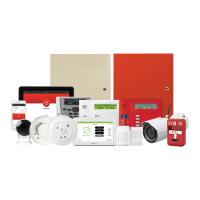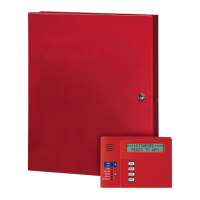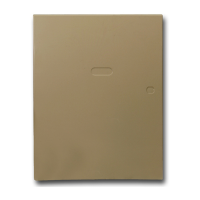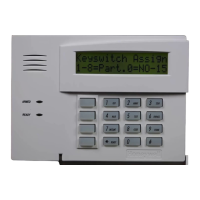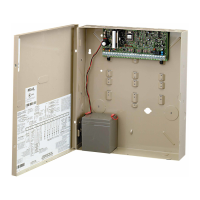63
Section 6: User Access Codes
• • • • • • • • • • • • • • • • • • • • • • • • • • • • • • • • • • • • • • • • • • • • • • • • •
General Information
The VISTA-128FBPT system allows a total of 150 security access codes to be allocated. The VISTA-250FBPT allows a
total of 250 security access codes to be allocated. Each security access code is identified by a user ID number.
Regardless of the number of partitions each code has access to, it occupies only one user slot in the system.
If a particular code is not used in all partitions, that user ID number cannot be used again.
The Quick Arm feature can also be programmed (partition-specific program field
∗
29). The Quick Arm feature allows the
user to arm the system by pressing the [#] key instead of the security code. The security code must always be entered to
disarm the system.
A user code other than the installer code must be p
rogrammed in order for the Quick Arm feature to function.
The system is shipped with the following defaults for the user codes:
User 4-Digit Code Alpha Descriptor
User 1 (Installer)
5140
INSTLR
User 2 1234 MASTER
User Codes and Levels of Authority
Each user of the system can be assigned a level of authority, which authorizes the user for certain system functions. A
user can have different levels of authority within different partitions
Use the “View Capabilities” keypad function (User Code + [
∗
] + [
∗
]) to view the partitions and authority levels for
which a particular user is authorized. These levels are described below.
Level 0: Installer (User 1) Code
• Programmed in field
∗
00 (default = 5-1-4-0). Installer Open/Close reporting selected in field
∗
39.
• Can perform all system functions (arm, disarm, bypass, etc.), but cannot disarm if armed by another code (or by
Quick Arm).
• Can add, delete, or change all other codes, and can select Open/Close reports for any user.
• Is the only code that can be used to enter program mode. The Installer Code can be prevented from re-entering the
Program Mode by exiting using
∗
98.
• Must program at least one Master Code during initial installation. Master Codes are codes intended for use by the
primary user(s) of the system.
Level 1: Master Codes
• Can perform all normal system functions.
• Can be used to assign up to 248 lower-level codes, which can be used by other users of the system.
• Cannot assign anybody a level of 0 or 1.
• May change their code.
• Can add, delete, or change Manager or Operator Codes. Each user’s code can be individually eliminated or changed
at any time.
• Open/Close reporting is automatically the same as that of the Master who is adding the new user.
Level 2: Manager Codes
• Can perform all system functions (arm, disarm, bypass, etc.) programmed by Master.
• May add, delete, or change other users of the system below this level (Manager cannot assign anybody a level of 0, 1,
or 2).
• May change their code.
• Open/Close reporting is automatically the same as that of the Manager who is adding the new user.

